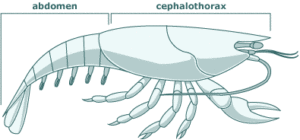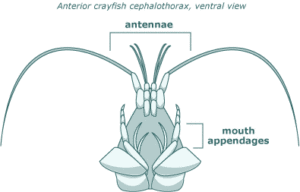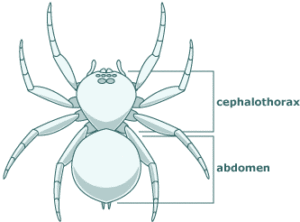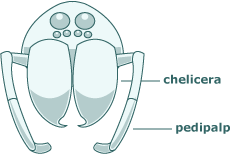an active learning technique in which an instructor uses a classroom response system to instantly guage student responses to multiple choice questions. Classroom response systems can be simulated by having students hold up differently colored pieces of paper to indicate different answers.
C
crustacean
Crustaceans are a group of arthropods distinguished by the following characters:
- a body divided into cephalothorax and abdomen

- two pairs of antennae and three pairs of mouth appendages

Examples of crustaceans include crabs, pillbugs, and barnacles (It’s true! Under that lumpy exterior, barnacles are crustaceans with all of the right characters!).

Sally Lightfoot Crab photo by Gerald and Buff Corsi © California Academy of Sciences; Acorn Barnacles photo by Sherry Ballard © California Academy of Sciences; Pillbugs photo © 2002 William Leonard
cosmic dust
Small particles or grains of solid material in space. Cosmic dust forms in outflows and winds from stars or supernovae and is rich in the heavy elements and organic compounds necessary for life. Dust from early generations of stars mixed with gas in nebulae and ultimately formed subsequent stars and planetary systems.
coprolite
Fossilized dung.
constraint
comet
An asteroid-like object containing ice and other compounds such as methane and ammonia. When heated by the Sun, a comet develops a surrounding cloud of gas called a “coma” and often a visible tail.
coevolution
A process in which two or more different species reciprocally effect each other’s evolution. For example, species A evolves, which causes species B to evolve, which causes species A to evolve, which causes species B to evolve, etc. For a more detailed explanation, see our resource on coevolution in Evolution 101.
codon
A three base unit of DNA that specifies an amino acid or the end of a protein.
chromosome
A cellular structure made of DNA and proteins that contains all or part of an organism’s heritable, genetic information. Humans have 23 pairs of chromosomes.
chromosomal inversion
A mutation in which a section of chromosome is reversed 180 degrees. Because inversions in certain chromosomes can be observed with a light microscope, they were particularly important in early genetic studies.
chloroplast
In plants and photosynthetic protists, a cellular body that uses energy from the sun (sunlight) to create organic compounds from carbon dioxide and water.
chitin
Hard, tough substance that occurs widely in nature, particularly in the exoskeletons of arthropods. Chemically, chitin is a carbohydrate and is made from sugar molecules.
chelicerate
Chelicerates are a group of arthropods distinguished by the following characters:
- a body divided into a cephalothorax and abdomen

- no antennae, but two pairs of appendages on the anterior cephalothorax (chelicerae and pedipalps), and four pairs of walking legs

Examples of chelicerates include spiders, scorpions, and horseshoe crabs.

Black Widow Spider photo by George W. Robinson © California Academy of Sciences; Scorpion photo by Dr. Antonio J. Ferreira © California Academy of Sciences; Horseshoe Crab photo © 2000 John White
carnivore
An organism that eats almost exclusively animals (caro = flesh, vorare = to swallow up).
carbon chauvinism
A suggestion by astronomer Carl Sagan that it is narrow-minded to view carbon as the only possible basis for life. He proposed that life in other places might be based on alternative biochemistries not found on Earth.
Cambrian Period
Geologic time period 543-490 million years ago. The Cambrian is the first period of the Paleozoic era, during which all animals and plants lived in the Earth’s oceans. Many organisms that we recognize as members of modern animal groups (including the arthropods, sponges, chordates, and molluscs) made their first unmistakable appearance in the fossil record during the Cambrian.
chordates
Any member of the animal clade Chordata, a large group of vertebrates and some marine invertebrates. Chordates have a notochord, a rod-like cartilaginous structure supporting the nerve cord, that they inherited from their common ancestor. Modern chordates include vertebrates, tunicates, hagfish, and lancelets.
clade
A group of organisms that includes all the descendents of a common ancestor and that ancestor. For example, birds, dinosaurs, crocodiles and their extinct relatives form a clade. For a more detailed explanation, see our resource on clades in Evolution 101.
common ancestor
Ancestral organism shared by two or more descendent lineages — in other words, an ancestor that they have in common. For example, the common ancestors of two biological siblings include their parents and grandparents; the common ancestors of a coyote and a wolf include the first canine and the first mammal.
character
A recognizable feature of an organism. Characters may be morphological, behavioral, physiological, or molecular. They are used to reconstruct phylogenies.
